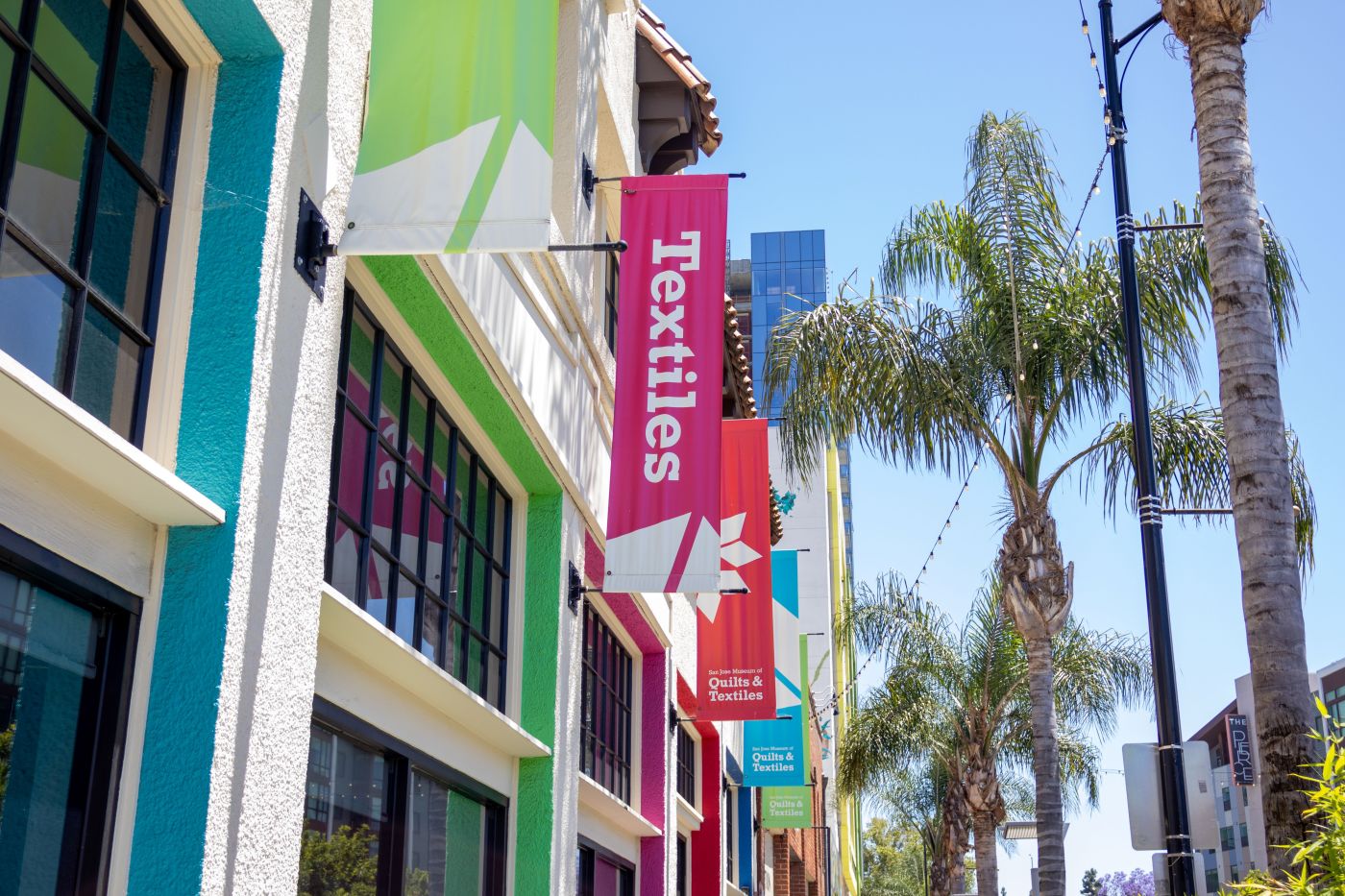Editor’s note: This story is part of the annual Mosaic Journalism Program for Bay Area high school students, an intensive course in journalism. Students in the program report and photograph stories under the guidance of professional journalists.
After running a three-month emergency fundraising appeal, one of the country’s first museums dedicated to textile arts is nearly at its goal of raising $300,000.
As of June 8, the appeal, which ends June 30, had raised just over $240,000 from over 600 donors, said Melissa Leventon, board chair of the San Jose Museum of Quilts & Textiles.
“It’s been very heartwarming to see the level of response we’ve had,” Leventon said.
Related Articles
San Jose performance connects teens to legends of their parents
Google’s huge San Jose project moving ahead
New San Jose cafe combines coffee and kitties waiting for adoption
San Jose teen entrepreneurs find business is booming
One South Bay school flouts California recycling law — but few complain
The donations will go toward paying off the museum’s mortgage and electricity bills, among other costs needed for maintaining the facilities and art collections, director Kris Jensen said.
As an arts non-profit, fundraising has been difficult for the museum since the pandemic. In economic downturns, philanthropists tend to focus on funding programs that cover basic needs, which are deemed more vital, thus impacting arts organizations financially, Jensen said.
To attract more visitors, the museum has been exploring ways to operate not only as a museum, but also as an education center.
A volunteer carefully preserves a Dia de los Muertos themed textile work. (Maxwell Alexander/Mosaic)
“People want to be much more engaged and hands-on with museums these days,” Jensen said. “So we’re offering more classes to teach people about various fiber arts, whether it’s weaving or knitting or crocheting.”
Aside from the internet, there are not many outlets for people to learn textile-related skills, and many schools have closed programs that taught such skills, Leventon said. So the museum has been offering weekly, in-person classes which can be very helpful for learning.
Located in San Jose’s SoFA district, the museum has a colorful but simple, predominantly glass exterior. Inside, soft music and a multitude of colored fabrics greet the visitor. Deeper into the exhibition rooms many textiles, each with unique patterns, are on display.
The museum, the first in the nation to focus on textile arts, has been around since 1977. Since then, it has displayed pieces that reflect a wide range of communities.
Leventon pointed to an exhibition of works made and collected by artist Jonathan Shannon. The collection features Shannon’s works that reference queer themes while using fabrics that are traditional to various cultures.
Additionally, the museum allows for female representation within the arts community, as textile arts were traditionally done by women, volunteer Connelee Hatcher-Shaw said.
“It was a way for women to express their creativity in something that’s useful,” Hatcher-Shaw said. “When you have to weave or knit or crochet, and make it something beautiful as well as practical, that’s where the artistry comes in. You invent ways to make it yours and to share your stories.”
Started from a small and passionate community, the museum acts as a resource for anyone who wants to learn about the many art forms on display, which range from garments and quilts to contemporary pieces, Leventon said.
“It’s a cliche, but people are often blown away when they walk inside,” Leventon said. “We have a very unassuming storefront building … but we have great treasures inside and there’s a world of threads waiting to be discovered.”
Although the museum has been mostly successful in raising awareness for its programs, the $60,000 in funding still needed is crucial to sustaining the museum long term, Jensen said, adding that donors help provide opportunities for visitors to connect with textile art.
“People can learn a lot, just have fun and … have a special night out exploring an art form that they’re maybe not used to,” Jensen said.
To donate, visit the museum’s website at sj-mqt.org.
Amanda Boles is a member of the class of 2026 at Homestead High School in Cupertino.
Maxwell Alexander is a member of the class of 2025 at Silver Creek High School in San Jose.












